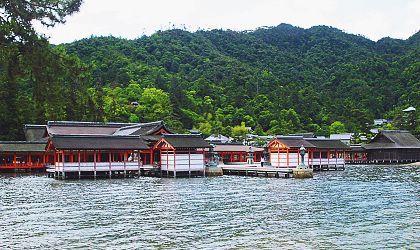
"Miyajima" means "shrine-island" in Japanese, referring to the island's cause of fame, Itsukushima Shrine. The shrine is known worldwide for its "floating torii gate".
The shrine and its torii gate are unique for being built over water, seemingly floating in the sea during high tide. The shrine complex consists of multiple buildings, including a prayer hall, main hall and a noh theater stage, which are connected with each other by boardwalks and are all supported by pillars above the sea.
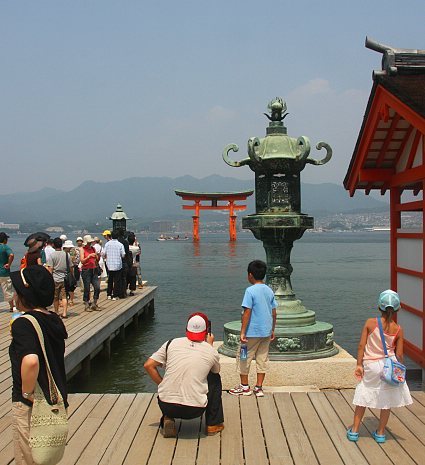
Miyajima Island has a long history as a holy site of Shinto. The island's highest peak, Mount Misen, was worshiped by local people as early as the 6th century. In 1168, Taira no Kiyomori, the most powerful man in Japan during the end of the Heian Period, selected the island as the site of his clan's family shrine and built Itsukushima Shrine.
The shrine is located in a small inlet, while the torii gate is set out in the Seto Inland Sea. Paths lead around the inlet, and visitors will enjoy walking along them while looking out onto the water. After the sun has gone down, the shrine and the torii gate are illuminated, providing a perfect backdrop for ryokan guests to enjoy an evening walk in yukata and geta sandals.
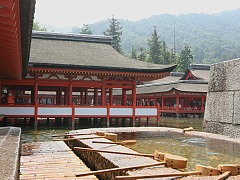 | 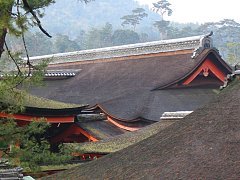 |
Alternatively, tourists can view the illuminated island from boat cruises. Cruises last thirty minutes and take passengers around the bay and through the torii gate (during high tide only). Reservations are required and can be made through one's ryokan or at the tourist information desk.
Because the experience of Itsukushima Shrine involves the water over which it is built, it is good to be aware of the hours of the tide during one's visit. At high tide the shrine and its gate float above the water, and this is certainly the time at which they are most picturesque. At low tide, the water drains out of the bay and out past the gate. Many people take the opportunity to walk out and see the gate from up close.
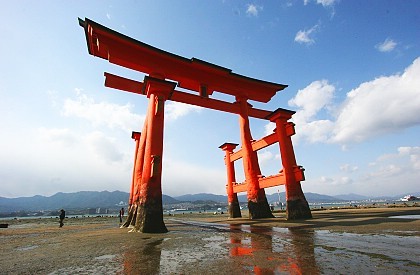




No comments:
Post a Comment